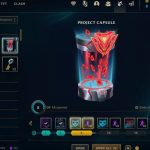Are you ready to dive into the world of Valorant competitive maps?
Get ready for an in-depth exploration of all the maps that will put your skills to the test.
From the tight corridors of Bind to the verticality of Split, each map offers a unique challenge that will keep you on your toes.
With a keen eye for strategy and a passion for victory, you’ll gain the knowledge you need to dominate the battlefield.
Let’s take a closer look at these battlegrounds and uncover their secrets.
Key Takeaways
- Each map in Valorant has unique features and gameplay elements that require careful planning and coordination.
- Icebox is a complex map with multiple levels and narrow corridors, requiring players to understand the best routes and angles of attack.
- Breeze offers wide open spaces for long-range engagements, adding a new dimension to gameplay with its verticality.
- Fracture has an asymmetrical layout and unpredictable rotations, rewarding teams with strong game sense and communication skills.
Bind
In Bind, you’ll find tight corridors and teleporters that can quickly transport you across the map. This map is known for its unique layout and gameplay strategies that require careful planning and coordination among teammates. Bind offers a challenging experience with its narrow passageways, making it crucial to have good map awareness and communication skills.
One of the key aspects of Bind map analysis is understanding the importance of controlling the teleporters. These teleporters can be a game-changer as they allow for quick rotations and surprise flanks. Players must strategically use the teleporters to gain an advantage over their opponents or to defend certain areas effectively.
Another crucial gameplay strategy in Bind is utilizing the map’s tight corridors to your advantage. These narrow pathways often lead to close-quarters combat, favoring agents with strong close-range abilities and weapons. It’s essential to master your agent’s abilities and choose loadouts that excel in close-range engagements.
Furthermore, controlling the two bombsites in Bind is critical for success. Both sites offer unique challenges and opportunities for attackers and defenders. Understanding the best approach to attack or defend each site can significantly impact the outcome of rounds.
Split
When it comes to Split, you’ll find yourself immersed in a map that offers a unique vertical gameplay experience.
With multiple levels and vertical pathways, Split encourages players to think strategically and utilize their verticality to gain an advantage over their opponents.
Additionally, the placement of control points on Split is carefully designed to create intense and strategic gameplay moments, where every decision matters and can potentially change the outcome of the round.
Get ready to explore the depths of Split and master the art of vertical gameplay and strategic control point placement.
Split’s Vertical Gameplay
Vertical gameplay in Split is unique due to its multiple levels and the need for players to utilize verticality to gain an advantage. This map offers a dynamic and strategic experience that keeps players on their toes.
Here are some advantages of vertical gameplay in Split:
-
Height advantage: By taking control of higher levels, players can have a better view of the map, allowing them to spot enemies and plan their next move more effectively.
-
Flanking opportunities: Split’s verticality creates numerous flanking routes, allowing players to surprise their opponents from unexpected angles. This adds an element of unpredictability to the gameplay, forcing teams to always stay alert.
-
Map rotations: The vertical design of Split opens up various rotation paths, giving teams the option to quickly switch between sites or defend multiple areas simultaneously. This strategic advantage can catch opponents off guard and disrupt their plans.
Mastering the vertical gameplay in Split can give you the upper hand and make a significant impact on your team’s success. So, don’t forget to look up and utilize the multiple levels to your advantage.
Strategic Control Point Placement
To maximize your tactical advantage, strategically placing control points in Split can dictate the flow of the game and give your team the upper hand.
Split is a map that offers unique opportunities for strategic control point placement. With its vertical gameplay and multiple levels, understanding the map’s layout is crucial for effective control point placement.
One key strategy is to secure control points that provide access to vital areas of the map, such as the middle control point, which allows for control over both bomb sites.
Another effective strategy is to establish control points near choke points or high-traffic areas, enabling your team to control the flow of enemy movement.
Haven
When it comes to Haven, a deep analysis of the map layout and strategies for attacking is crucial for success. As you navigate through the three bomb sites and multitude of pathways, understanding the flow and chokepoints is key to gaining an advantage over your opponents.
Map Layout Analysis
The map layout analysis reveals the strategic intricacies of each Valorant map. Understanding the layout of a map is crucial to developing effective map control strategies and map rotation tactics. Here are three key elements to consider when analyzing map layouts in Valorant:
-
Chokepoints: Identifying chokepoints helps determine where the enemy team is likely to push or defend. Controlling these areas can give you a significant advantage in map control.
-
Sightlines: Knowing the sightlines on a map allows you to position yourself for advantageous engagements and hold angles that give you the upper hand.
-
Rotational paths: Understanding the various routes and paths between bombsites and spawn points helps in making quick rotations and catching the enemy off guard.
Strategies for Attacking
Developing effective strategies for attacking in Valorant involves carefully analyzing the map layout, identifying key chokepoints, understanding sightlines, and finding efficient rotational paths.
When it comes to attack strategies for different agent compositions, it’s important to consider the abilities and roles of your team. For example, if your team has a duelist like Jett or Phoenix, aggressive entry fragging techniques can be employed to gain control of key areas and create chaos for the defending team. These agents excel at initiating engagements and can be supported by agents like Sage or Cypher, who can provide utility and information gathering.
By utilizing smoke screens, flashes, and intel, attacking teams can effectively breach defenses and secure bomb sites. It’s crucial to communicate and coordinate with your team, adapting your strategies to counter the defending team’s setup.
Ascent
Ascent is one of the most dynamic maps in Valorant, offering a wide variety of strategic possibilities for both attackers and defenders. When analyzing chokepoints on Ascent, it’s important to consider the advantages that attackers have. The three main chokepoints on Ascent are A Main, B Main, and Mid.
A Main: This chokepoint offers attackers the advantage of long-range sightlines, making it easier for them to pick off defenders from a safe distance. Defenders should prioritize holding angles and using utility to delay the attackers’ push.
B Main: This chokepoint is narrower than A Main, but it still presents challenges for defenders. Attackers can use smokes and flashes to obscure vision and gain control of the site. Defenders should coordinate their utility to deny attackers’ entry and hold off their push for as long as possible.
Mid: As the central chokepoint, Mid offers attackers the opportunity to split their forces and attack from multiple angles. Defenders should focus on controlling Mid and preventing attackers from gaining access to both A and B sites.
To successfully defend on Ascent, coordination and communication are key. Defenders should prioritize holding strong angles, using utility effectively, and coordinating rotations to quickly respond to attackers’ movements. By analyzing the chokepoints and understanding the advantages that attackers have, defenders can develop effective strategies to hold off the enemy team and secure victory on Ascent.
Icebox
Icebox, one of the newest maps in Valorant, offers a unique and challenging gameplay experience.
In terms of map analysis, Icebox presents a complex layout with multiple levels and narrow corridors, making it crucial to understand the best routes and angles of attack.
When it comes to gameplay strategies, mastering control of the middle area and utilizing verticality can give you a significant advantage.
Communication and coordination with your team become even more essential in this dynamic and fast-paced map.
Icebox Map Analysis
When exploring the Icebox map, you’ll find that its verticality and multiple pathways offer unique strategic opportunities. The icebox map layout is characterized by its complex design, with multiple levels and platforms that can be utilized to gain a tactical advantage.
Here are some key attacking strategies to consider:
-
Split Push: Divide your team into two groups and attack from multiple directions simultaneously. This can create confusion among the defenders and make it harder for them to hold their positions.
-
Control the Mid Lane: The mid lane on Icebox is a crucial area that provides access to both bombsites. Capturing and maintaining control of this area will allow your team to easily rotate between bombsites and apply pressure where needed.
-
Utilize Verticality: Icebox offers numerous vertical positions that can be used to your advantage. Utilize agents with mobility abilities to gain the high ground and surprise the defenders from unexpected angles.
Icebox Gameplay Strategies
Now that we’ve discussed the layout and features of Icebox, let’s dive into some gameplay strategies that can give you an edge on this map. Icebox is known for its wide-open spaces and multiple vertical levels, making it crucial to have a strong defensive strategy. One effective strategy is to establish control over the middle area, which allows you to rotate quickly and respond to enemy pushes. Another key aspect is agent selection. Due to the map’s size and verticality, agents with strong area denial abilities like Killjoy or Cypher can be valuable assets. Additionally, agents with mobility like Jett or Raze can take advantage of the map’s verticality to gain unexpected flanking positions. By implementing these icebox defensive strategies and making smart agent picks, you’ll be well-equipped to dominate the competition on this challenging map.
| Icebox Defensive Strategies | Icebox Agent Picks |
|---|---|
| Establish control over middle area | Killjoy |
| Utilize area denial abilities | Cypher |
| Take advantage of map’s verticality for flanking | Jett, Raze |
Breeze
Explore Breeze, a tropical paradise map where you’ll navigate through lush surroundings and engage in intense Valorant battles. This new addition to the Valorant map pool brings a fresh and exciting experience to players.
Here is an overview of the Breeze map and some gameplay strategies to help you conquer this stunning battleground.
-
Open Spaces: Breeze is known for its wide open areas, offering plenty of opportunities for long-range engagements. Utilize agents with strong ranged abilities and snipers to hold down key positions and control the map.
-
Verticality: The map’s verticality adds a new dimension to gameplay. Take advantage of the numerous ramps, ropes, and platforms to gain the high ground and surprise your opponents. Agents with mobility skills like Jett or Raze can excel in navigating these vertical spaces.
-
Chokepoints and Rotations: Breeze features multiple chokepoints and intricate pathways, making rotations and map control crucial. Coordinate with your team to secure important areas and create opportunities for flanks. Communication and map awareness are key to dominating Breeze.
With its breathtaking visuals and unique layout, Breeze offers a refreshing change of pace in the Valorant competitive scene. Mastering the open spaces, utilizing verticality, and strategizing rotations will give you the upper hand in this tropical paradise.
Fracture
Fracture introduces a unique and challenging gameplay experience with its fractured map design and unpredictable rotations. The map is divided into two distinct halves, connected by a central area known as the Fracture. This central area is the focal point of the map, as it creates opportunities for intense firefights and strategic plays.
One of the most notable aspects of Fracture is its asymmetrical layout. Each side of the map offers different routes and angles, forcing players to adapt their strategies on the fly. This dynamic gameplay keeps matches exciting and ensures that no two rounds play out the same way.
Fracture also features unique gameplay elements that add depth to the gameplay. The map is filled with verticality, offering multiple levels for players to utilize. This allows for creative plays and unexpected flanks, keeping both attackers and defenders on their toes.
Furthermore, the unpredictable rotations in Fracture make it crucial for teams to communicate and coordinate effectively. The map’s fractured design creates multiple avenues for rotations, making it challenging for teams to predict their opponent’s movements. This adds an element of unpredictability to the gameplay and rewards teams with strong game sense and communication skills.
Haven (Night
Haven (Night) features a unique nighttime setting that adds a new level of atmosphere and intensity to gameplay. The strategic positioning and nighttime advantages in this map make it a thrilling experience for players.
Here are three key elements that make Haven (Night) stand out:
-
Enhanced Stealth: The cover of darkness provides players with the opportunity to move around the map undetected. Utilizing this advantage, you can catch opponents off-guard and gain the upper hand in engagements. The element of surprise becomes a powerful tool that can turn the tides in your favor.
-
Tactical Lighting: The careful use of lighting can greatly impact your gameplay on Haven (Night). By strategically placing your abilities or using light sources to your advantage, you can create distractions and confuse the enemy team. This level of tactical depth adds an extra layer of complexity to the map.
-
Strategic Hideouts: Haven (Night) offers numerous hiding spots and corners that become even more effective during the darkness. These areas allow you to patiently wait for unsuspecting enemies to pass by, setting up devastating ambushes. Mastering the art of strategic positioning in this map can give you a significant edge over your opponents.
Split (Night
When playing on Split (Night), you’ll need to adapt your strategies to the unique challenges of the darkened environment. The Split (Night) map layout presents a thrilling and intense experience, with its narrow corridors and multiple levels. To help you navigate this map effectively, here are some strategic control points to consider:
| Control Points | Tips and Strategies |
|---|---|
| A Site | – Utilize smokes and flashes to gain control of A Site. The tight angles and corners make it difficult for defenders to hold their ground. Push together as a team to overwhelm the enemy. |
| B Site | – B Site is known for its long sightlines, so using long-range weapons like snipers can be advantageous. Make use of utility to block off key chokepoints and secure the site. Communication is key to coordinate attacks and defenses. |
| Mid | – Mid control is crucial on Split (Night). It offers access to both bombsites and allows for quicker rotations. Have a player dedicated to holding mid and gathering information to relay to the team. Use flashes and smokes to safely cross and deny enemy control. |
| Ropes | – Ropes connect the upper levels of the map, providing unique angles and routes. Use them to gain surprise advantages over the enemy. Be cautious, as they can also be easily held by defenders. |
| Sewers | – Sewers provide an alternative route to both bombsites. Use them to catch defenders off guard and create opportunities for your team. Coordinate with your teammates to execute well-planned attacks from unexpected angles. |
Bind (Night)
Now that we’ve explored the intricacies of Split (Night), let’s dive into another thrilling Valorant map: Bind (Night). This map offers a unique setting and gameplay experience that will put your skills to the test.
Defending strategies on Bind (Night) are crucial for success. Here are a few key strategies to consider:
-
Controlling the teleporters: Bind (Night) has two teleporters that can be used by attackers to quickly move around the map. As a defender, it’s essential to keep an eye on these teleporter entrances and set up crossfires to catch attackers off guard.
-
Utilizing the showers area: The showers area on Bind (Night) can be a hot spot for both attackers and defenders. As a defender, consider using abilities to gain control of the showers and deny entry to attackers. Coordinate with your team to set up defensive positions that cover the showers and prevent attackers from gaining a foothold.
-
Holding the B site: The B site on Bind (Night) is a critical area that attackers often target. Consider choosing agents with strong area denial abilities, such as Brimstone or Viper, to hold off attackers and buy time for reinforcements to arrive.
By implementing these defending strategies and choosing the right agent picks, you’ll increase your chances of victory on Bind (Night).
Frequently Asked Questions
How Does the Day/Night Cycle Affect Gameplay on Haven and Split Maps?
The day/night cycle on Haven and Split maps affects gameplay by altering visibility and creating strategic opportunities. Players can use the darkness to surprise enemies or coordinate attacks. Adapt and dominate.
Are There Any Specific Strategies or Agent Combinations That Work Best on the Icebox Map?
When it comes to the icebox map, there are specific strategies and agent combinations that work best. Its unique features and challenges require a calculated approach. Dive deep into the fracture map and dominate the competition.
What Are the Unique Features or Challenges Players Can Expect on the Fracture Map?
On the Fracture map, you’ll face unique challenges, like its dynamic layout and shifting objectives. Haven and Split offer interesting day/night gameplay, while Icebox demands specific strategies and agent combos. Bind and Haven have noteworthy daytime vs nighttime differences. And let’s not forget the intriguing lore behind Breeze.
Are There Any Differences in Map Layout or Objectives Between the Daytime and Nighttime Versions of Bind and Haven?
In the daytime version of Bind, the B site is more exposed, making it crucial to control mid. At night, the A site becomes more challenging due to reduced visibility. Haven’s day/night cycle affects rotations, making map control and agent selection crucial to success.
Is There Any Lore or Backstory Associated With the Breeze Map That Players Should Know About?
The lore of Breeze adds depth to the map’s design. Unlike other maps, Breeze introduces a tropical island setting with unique architectural elements. Its vibrant colors and open spaces create a refreshing gameplay experience.





